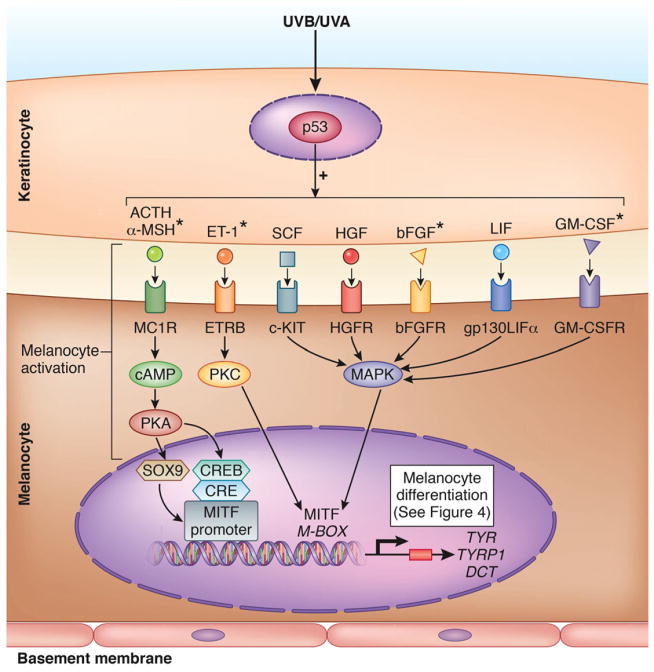Figure 2.
Melanocyte activation integrated in the schematic view of the UV-induced pigmentation pathway in the normal skin. Once stimulated by UV light, p53 initiates the release by keratinocyte of melanogenic paracrine growth factors and cytokines: adrenocorticotropic hormone (ACTH),52 α-melanocyte-stimulating hormone (α-MSH),52,53 endothelin-1 (ET-1),54–56 stem cell factor (SCF),57 hepatocyte growth factor (HGF),58 basic fibroblast growth factor (bFGF),54,56 leukemia inhibitory factor (LIF),59 and granulocyte macrophage colony-stimulating factor (GM-CSF).60,61 The keratinocyte factors further interact with their corresponding receptors on melanocytes, and induce melanocyte activation, with subsequent stimulation of microphtalmia-associated transcription factor (MITF)62,63 and its downstream targets, the melanogenic enzymes Tyrosinase (TYR), Tyrosinase-related protein 1 (TYRP1), and Dopachrome tautomerase (DCT); this cascade leads to synthesis of melanin and melanocyte differentiation (see Fig. 4). MITF, the master regulator of melanogenic pathway, is activated through three signaling pathways regulated by cAMP,64,65 protein kinase C (PKC),63,66,67 and mitogen-activated protein kinase (MAPK)63,67 to subsequently induce proliferation and differentiation of human melanocytes.68 Figure based and modified from [62, 63]. UVB was shown to induce all keratinocyte factors included in the figure. *Factors activated by both UVB and UVA. Figure 2 was done by the medical illustrator Debbie Maizels.

